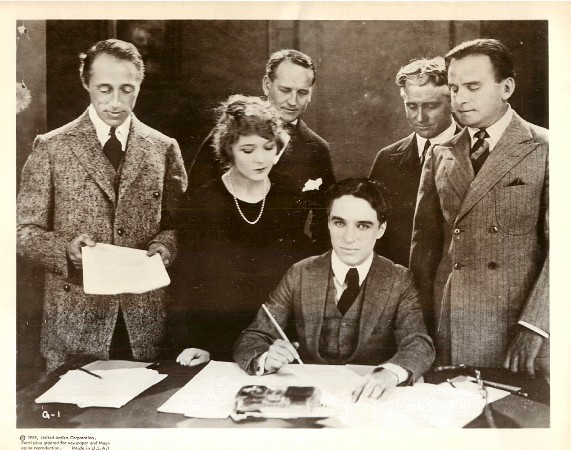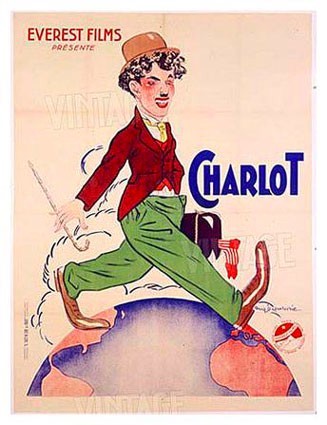Main Content
Lesson 2: The Development of Cinematic Language
Chaplin as Director
Chaplin turned to directing his films when he was 25, and became a very recognizable figure and a prominent director of very commercially successful films. He began to develop his character during this time. Chaplin’s first role as the Tramp character would be in the big race in the Kid Auto Races.
Video 2.4: Clip from Kid Auto Races (1914).
Clip from Kid Auto Races Video Transcript
SPEAKER: On his first appearance in public in 1914.
[MUSIC PLAYING]
A year later, he would be mobbed wherever he went. Two years later, he would be the most famous man in the world. February 1916, Chaplin signs with the Mutual Film Corporation for the highest salary of any performer in history. Standing behind, Sydney Chaplin.

After this, Chaplin would sign the largest contract in the history of cinema with Mutual Film. Eventually, Chaplin, along with D.W. Griffith, Mary Pickford, and Douglas Fairbanks created United Artists in 1919, which still exists today. United Artists was formed in response to one of the tensions that still exists in cinematic production, namely the tension between individual artists and investors. Movies are very capital intensive up front, so money people (investors) tend to dominate over production people. United Artists was designed as an umbrella for individual filmmakers and artists to be in control of their own product, and still have a distribution and production line.
Chaplin’s first full length feature as a writer, director, producer, and star was The Kid, a 1921 film. This film was one of the most successful films of its time, traversing the world.
Silent films, especially Chaplin’s variety of silent films, were able to traverse the world because translation wasn’t necessary. Chaplin believed that cinema was a type of universal language of movement, enabling easy translation into other cultures. Instead of dubbing and subtitling films as we do now, Chaplin would complete a film and change out the intertitles. Thus, he could release the film essentially unchanged.

|

|
